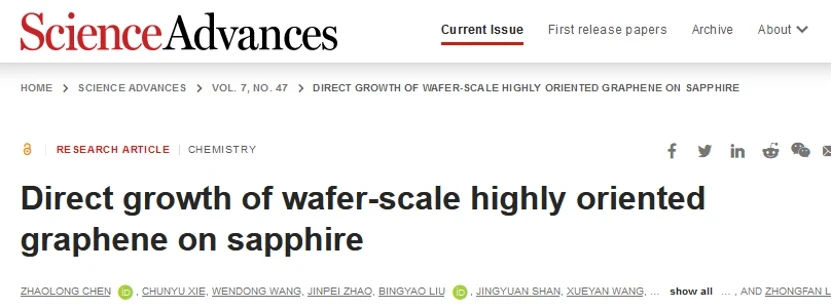In an age where the demand for chips skyrockets overnight, fueled by advancements in 5G communications, autonomous vehicles, and remote work, the semiconductor industry faces unprecedented challenges and opportunities. The cornerstone materials of semiconductor fabrication, monocrystalline silicon wafers, are under pressure to evolve as we enter the "Post-Moore Era." This term reflects the industry's shift beyond Gordon Moore's famous law, which predicted the doubling of transistors' density on a chip every 18 months, leading to continuous performance enhancement at constant cost. Today, as transistor sizes approach physical limits and costs soar, the industry stands at a crossroads, seeking innovative materials to drive future growth.

At the forefront of this search is graphene, a material that has captivated scientists and engineers alike with its exceptional properties. Graphene, a two-dimensional lattice of carbon atoms, boasts an extraordinary combination of high carrier mobility, strength, and thermal conductivity, making it a prime candidate for next-generation electronic and optoelectronic devices. The development of high-quality monocrystalline graphene is particularly crucial, as it surpasses polycrystalline graphene in uniformity, electrical properties, and scalability, potentially revolutionizing semiconductor technology.
However, the journey to integrate graphene into high-end applications such as chip manufacturing is fraught with challenges. The European Union's Graphene Flagship program has pioneered techniques for growing single-crystal graphene wafers, yet the scalability of these methods for industrial application remains a hurdle. Despite China's leading position in graphene production, the transition from low-quality graphene powder and films to high-quality, large-scale monocrystalline graphene sheets is an ongoing challenge that the industry must overcome.

The Beijing Graphene Institute (BGI) and the team led by Academician Liu Zhongfan have made significant strides in this direction. They have developed a proprietary substrate treatment process that enables the mass production of high-quality graphene films on A3-sized substrates, with an impressive annual output. This breakthrough not only showcases China's potential to lead in the graphene sector but also underscores the importance of material innovation in the Post-Moore Era.
As the semiconductor industry evolves, the integration of heterogeneous circuits and the exploration of new materials like graphene are becoming increasingly important. These innovations offer a pathway to transcend the limitations of Moore's Law, opening up new avenues for performance enhancement and energy efficiency in electronics. The collaborative efforts of researchers, industries, and governments worldwide are crucial in harnessing the full potential of graphene, paving the way for the next generation of semiconductor technology and reinforcing the foundation for "China's chip" ambition in the global arena.
The Post-Moore Era heralds a transformative phase in the semiconductor industry, where the race for innovation extends beyond traditional silicon-based technologies. With graphene's promise and the industry's relentless pursuit of breakthroughs, the future of integrated circuits is on the cusp of a new revolution, one that will redefine the landscape of technology and its applications in our daily lives.





Leave a comment
All comments are moderated before being published.
This site is protected by hCaptcha and the hCaptcha Privacy Policy and Terms of Service apply.